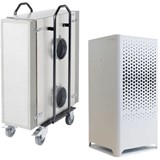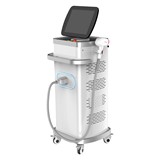Key Takeaways
- It's a compliance issue: A documented facilities maintenance plan is a core requirement for meeting accreditation standards, such as the RACGP Standards for general practices. It’s not optional; it's evidence of a safe and well-managed practice.
- Preventative maintenance is cheaper than reactive repairs: The cost of an emergency call-out for a failed air conditioner during a summer heatwave is far greater than the cost of a scheduled annual service. A plan saves you money and prevents disruptive downtime.
- The physical environment directly impacts patient trust: A clean, well-maintained waiting room with everything in working order sends a powerful, non-verbal message that your practice is professional, safe, and cares about its patients.
- Start with a simple asset list: Your plan doesn't need to be a 100-page document. Begin by simply walking through your practice and listing all critical assets (e.g., air conditioning, hot water system, sterilisation equipment, emergency lighting) and their last service date.
- Focus on WHS risks: A good maintenance plan is a critical risk management tool. It helps you proactively identify and mitigate common workplace hazards like frayed carpets (trip hazards) or faulty electrical equipment, protecting both your patients and your staff.
Introduction: More than just a clean waiting room
As a practice manager or owner in Australia, you know that running a successful medical centre goes far beyond clinical excellence. Patients and accreditation bodies alike expect a safe, clean, and professional environment. Yet, the maintenance of the physical facility itself, the lights, the plumbing, the air conditioning, the furniture, is often managed reactively, addressed only when something breaks.
This "break-fix" approach is not just inefficient; it's a significant risk to your compliance, your budget, and your reputation. A well-structured facilities maintenance plan is not an administrative burden. It's a fundamental pillar of a well-run practice that ensures patient safety, meets accreditation standards, and ultimately protects your bottom line. This article will break down why a maintenance plan is essential and provide a simple framework to create one for your centre.
It’s a non-negotiable for accreditation and compliance
For Australian general practices, the most compelling reason to have a facilities maintenance plan is simple: it's a requirement for accreditation. The RACGP Standards for general practices are explicit. Criterion C1.1 states that a practice must have "safe and appropriate physical facilities." An assessor will want to see evidence that you are proactively managing your facility, not just reacting to problems.
A documented maintenance plan serves as crucial evidence that you are meeting your obligations. It demonstrates that you have a systematic approach to:
- Ensuring safety: Proactively managing electrical, fire, and structural safety.
- Infection control: Maintaining clean and functional surfaces, ventilation, and plumbing.
- Emergency preparedness: Regularly testing emergency lighting, fire extinguishers, and smoke alarms.
Without a documented plan, you are essentially telling an assessor that your approach to facility safety is informal and ad-hoc, which is a significant red flag.
The patient experience begins in the car park
The patient's perception of your practice is formed long before they see a clinician. It begins the moment they arrive. A stained carpet, a flickering light in the bathroom, or a waiting room that's freezing cold on a winter's day can create an impression of unprofessionalism and a lack of care, which can subconsciously erode their trust in your clinical services.
Your facility is a powerful form of non-verbal communication. A clean, bright, and well-maintained environment tells your patients:
- You are professional and organised.
- You take their safety and comfort seriously.
- You invest in the quality of your practice.
Conversely, a poorly maintained facility can create anxiety and doubt, which is the last thing a patient should feel when seeking medical care.
Preventative maintenance is always cheaper than emergency repairs
From a purely financial perspective, a reactive approach to maintenance is incredibly costly. An emergency call-out for a failed piece of critical equipment will always be more expensive than a scheduled service call.
A realistic scenario: The summer heatwave
It's a 38-degree day in mid-January, and the air conditioning unit in your busy suburban Melbourne clinic fails. The waiting room becomes unbearably hot, your staff are struggling, and heat-sensitive vaccines in the treatment room are at risk. You make an emergency call to a technician, who charges a premium call-out fee. They inform you that the unit has failed due to a blocked filter, a simple issue that would have been caught during a routine service, and they won't be able to get the required part for 24 hours.
The outcome: You are forced to cancel an afternoon of appointments, lose revenue, damage your reputation, and pay a hefty emergency repair bill. A scheduled $200 annual service would have prevented thousands of dollars in direct and indirect costs.
Your plan is a critical WHS risk management tool
A facilities maintenance plan is also a key part of your Work Health and Safety (WHS) program. According to Safe Work Australia, slips, trips, and falls are one of the leading causes of workplace injuries. Many of these incidents are directly caused by poorly maintained facilities.
Your plan helps you proactively identify and mitigate common hazards, including:
- Trip hazards: Frayed carpets, cracked tiles, or uneven flooring.
- Electrical hazards: Faulty power points or damaged equipment that hasn't been tested and tagged.
- Fire hazards: Obstructed fire exits or out-of-date fire extinguishers.
By regularly inspecting and maintaining your facility, you create a safer environment for both your staff and your patients, meeting your duty of care under WHS law.
How to build your facilities maintenance plan: A simple start
Creating your plan doesn't need to be complex. You can start with a simple spreadsheet.
- Create an Asset Register: Walk through your practice and list every piece of critical equipment and key facility component. Note its location, age, and any available service history.
- Identify Maintenance Tasks: For each asset, list the required maintenance tasks and their recommended frequency (e.g., "Air Conditioning Filters - Cleaned Quarterly, Serviced Annually"). You can find this information in the equipment manual or by asking your service providers.
- Build a Schedule: Create a simple 12-month calendar and plot out when each task is due. This gives you a clear, forward-looking view of your maintenance activities.
- Assign Responsibility: For each task, assign a responsible person. This might be the practice manager, a specific staff member, or an external contractor.
- Keep Records: Every time a task is completed, log the date, who performed the work, and any notes or costs. This creates the documented evidence you need for accreditation.
From overwhelmed to organised: A simple maintenance triage framework
Once you have a list of maintenance tasks, the immediate feeling can be overwhelming. To make your plan actionable, you need a simple way to sort through the noise and focus on what truly matters. A maintenance triage framework helps you categorise tasks so you can address the most critical items first.
The easiest way to do this is with a simple prioritisation matrix. Evaluate each task against two key criteria:
- Impact: How significantly would this failure affect patient care, safety, or your practice's operations?
- Urgency: How immediate is the risk? Is it a current safety hazard, a preventative task, or a cosmetic issue?
By plotting your tasks based on these two factors, you can quickly sort them into four clear priority levels.
Priority 1: Urgent and high impact
These are your immediate "drop everything and fix" issues. They typically pose a significant safety, compliance, or operational risk.
- Example: A faulty automatic entry door that won't close properly, creating a security, WHS, and accessibility risk.
Priority 2: Less urgent and high impact
These are your critical preventative tasks. They aren't an immediate crisis, but failing to address them will lead to a high-impact failure in the future.
- Example: Servicing the main air conditioning unit in September, well before the summer heat arrives.
Priority 3: Urgent and low impact
These are small but disruptive issues that should be addressed quickly but won't shut down your practice.
- Example: Replacing a flickering lightbulb in a storeroom or a consulting room.
Priority 4: Less urgent and low impact
These are your cosmetic, "nice-to-have" tasks. They should be on your list, but they are the lowest priority and can be scheduled when time and budget permit.
- Example: Repainting a scuff mark on a hallway wall.
Conclusion
A facilities maintenance plan is an essential tool that moves your practice from a reactive, high-risk operational model to a proactive, safe, and efficient one. It is fundamental to meeting your compliance obligations, managing your budget, and, most importantly, providing a safe and professional environment that fosters patient trust. By investing a small amount of time to create a simple plan today, you can save yourself from significant costs, disruptions, and risks tomorrow.




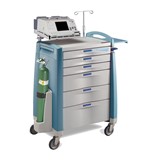

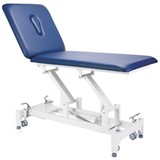

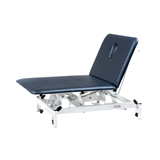

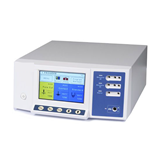


-160x160-state_article-rel-cat.png)


